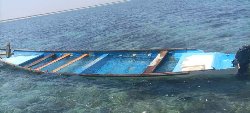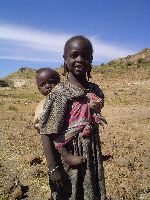Myanmar: Investigate Deadly Crackdown Against Rakhine
Myanmar: Investigate Deadly Crackdown Against Rakhine
Protesters in Mrauk-U
Survivors and eyewitnesses
describe unlawful use of lethal force by
police
(YANGON, January 22, 2018)—Myanmar
authorities should conduct an impartial investigation into a
deadly crackdown on ethnic Rakhine protesters by the Myanmar
Police Force in Rakhine State last week and hold
perpetrators accountable, Fortify Rights said today. Police
gunned down and beat unarmed protesters on January 16 in
Mrauk-U Township, killing seven protesters and injuring at
least a dozen others.
Fortify Rights spoke to four eyewitnesses and survivors who witnessed the shootings, three of whom were wounded during the incident.
“The
Government must ensure these killings are properly
investigated and that responsible police officers are
prosecuted without delay,” said Matthew Smith, Chief
Executive Officer of Fortify Rights. “The victims and
survivors, their families, and the people of Rakhine State
deserve swift justice. Impunity in this case could easily
enflame ethnic tensions.”
On January 16, several
thousand ethnic Rakhine civilians gathered at the Mrauk-U
District Administration Office to protest the government’s
attempt to shut down an annual event that marked the
anniversary of the fall of the Rakhine Kingdom to Burmese
forces in 1784. Police officers opened fire on the crowd,
shooting victims in the head, chest, and extremities.
“Khaing Htwe,” 27, described how the police shot him in the back while he was running away:
"When we entered the District Administration Office area, police shot in the air three times, and some people started to run away. At the same time, four or five police officers shot at us from a distance . . . I was shot in my back. I fell down, and friends helped me run away. I saw two people die on the spot."
Another protester, “Kyaw Htun,” 19, was shot in the knee. He told Fortify Rights:
"I saw two people die on the spot from gunshots. Five people were left there, but they were alive. One person was shot in the head, and the second person was shot in the chest, but the rest were shot on lower parts of their bodies, and they were alive. Police sent three dead bodies to the hospital that night, and they sent others the next morning."
Police shot “Aung Kyaw,” 31, four times in the left leg while he was on the frontline of the protest. He told Fortify Rights:
"The sound was like a rifle or machine gun. I don’t know how many police officers shot us. The guns sounded like there were more than three or four officers [shooting]. I didn’t see or hear any warning from the police before they shot us. They shot in the air and shot us after that. After I was shot, I ran away and I didn’t look back."
“Aung Soe,” a Rakhine organizer of the event, told Fortify Rights:
"I saw the police shoot in the air, but there was not even a minute gap, and then they shot into the crowd . . . There didn’t shoot any rubber bullets. They shot in the air, and then they started shooting at the people . . . There was no warning before the shooting. The police weren’t using loudspeakers to make announcements. They just started shooting . . . When they shot into the crowd, it wasn’t one-by-one but was continuous gunfire."
Survivors also described how police beat unarmed protesters. “Aung Soe” told Fortify Rights: “Some police grabbed some people and beat them with the butts of their guns. Some [police] kicked [protesters] as they lay on the ground, and they stepped on their chests or backs.”
“Aung Soe” also told Fortify Rights that he saw in the hospital the bodies of those killed. He said the bodies not only had “bullet injuries, but they had also been beaten or had wounds on their face and body.”
“At least 10 or 15 police officers were involved in the beatings,” “Aung Soe” said, adding that, “Some police were using their rifle butts [to beat protesters], so I saw some people defending themselves, but they weren’t attacking [the police].”
On January 17, State Counsellor Aung San Suu Kyi pledged to investigate the incident and take action against those who violated the law.
“It’s imperative that the government ensure this investigation is not another whitewash,” said Matthew Smith. “The government needs to show that no one is above the law, whether they wear a uniform or not.”
On the evening of January 16, hundreds of ethnic Rakhine protesters marched from Nandawyar, the site of the former Arakan (Rakhine) King’s palace in Mrauk-U, Rakhine State to the Mrauk-U District General Administration Office after local authorities cut electricity to an event marking the 233rd anniversary of the fall of the Rakhine Kingdom, effectively stopping the event. Within a few hours the number of protesters increased to several thousand.
The Myanmar Police Force reportedly claimed that the protesters threw stones and bricks at police officers, destroyed property and police vehicles at the office compound, and attempted to seize weapons from two police officers. Police also claimed that they tried to disperse the crowd by using batons and shields and by firing rubber bullets and warning shots before firing 10 gunshots of live ammunition into the crowd.
The bodies of the deceased and most of those injured during the police crackdown remain in Mrauk-U hospital in Rakhine state. Since the incident on January 16, police have restricted access to the hospital to victims’ families only.
According to the government, 20 police officers were injured during the incident.
Under international law, it is lawful for police to use lethal force only when absolutely necessary to prevent the loss of life or serious injury to themselves or others. The United Nations Code of Conduct for Law Enforcement Officials and the U.N. Basic Principles on the Use of Force and Firearms by Law Enforcement Officials limit state security officials to using force that is proportional to the threat at hand and only as a measure of last resort.
Ongoing human rights violations against Rakhine Buddhists in Rakhine State have been largely overshadowed by mass atrocity crimes against the Rohingya Muslim population. In 2016, Fortify Rights documented the Myanmar Army’s use of Rakhine civilians as forced porters during episodes of armed conflict against the Arakan Army, a non-state ethnic army comprising ethnic Rakhine fighters. In October 2017, Myanmar authorities sentenced Rakhine human rights defender Khaing Myo Htun to 18 months in prison for his alleged role in producing a statement in April 2016 claiming that the Myanmar Army used forced labor and committed other violations against civilians in Rakhine State in early 2016. Ethnic-Rakhine farmers have also reportedly dealt with unlawful land confiscation for many years.
“Rakhine State has been shattered by conflict and human rights violations for too long,” said Matthew Smith. “Peace in Rakhine and elsewhere in the country is not going to come from the barrel of a gun. The government’s response to this situation will influence the course of events in Rakhine State and much is at stake.”


 UN News: Ceasefire The Only Way To End Killing And Injuring Of Children In Gaza
UN News: Ceasefire The Only Way To End Killing And Injuring Of Children In Gaza ICHRP: US-Japan-Philippines Trilateral Summit Makes The Philippines A Battlefield For US-China Conflict
ICHRP: US-Japan-Philippines Trilateral Summit Makes The Philippines A Battlefield For US-China Conflict East West Center: Environmental Journalist Alexander Kaufman Receives East-West Center’s Inaugural Melvin M.S. Goo Writing Fellowship
East West Center: Environmental Journalist Alexander Kaufman Receives East-West Center’s Inaugural Melvin M.S. Goo Writing Fellowship Compassion in World Farming: Octopus Farm Must Be Stopped, Say Campaigners
Compassion in World Farming: Octopus Farm Must Be Stopped, Say Campaigners UN News: Shipwreck Tragedy Off Djibouti Coast, Drone Attacks Continue At Ukraine Nuclear Plant, Madagascar Cyclone Update
UN News: Shipwreck Tragedy Off Djibouti Coast, Drone Attacks Continue At Ukraine Nuclear Plant, Madagascar Cyclone Update UN News: Aid Lifeline Reaches Sudan's Darfur Region In Bid To Avert ‘Hunger Catastrophe’
UN News: Aid Lifeline Reaches Sudan's Darfur Region In Bid To Avert ‘Hunger Catastrophe’